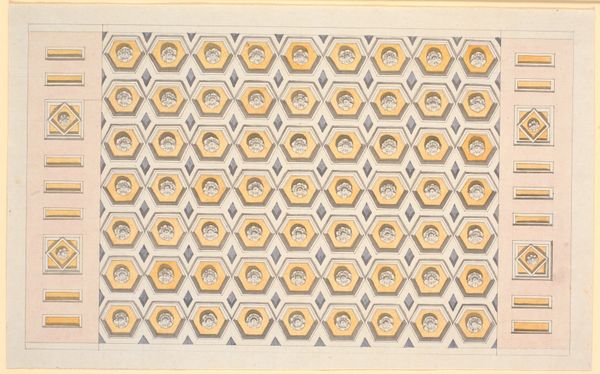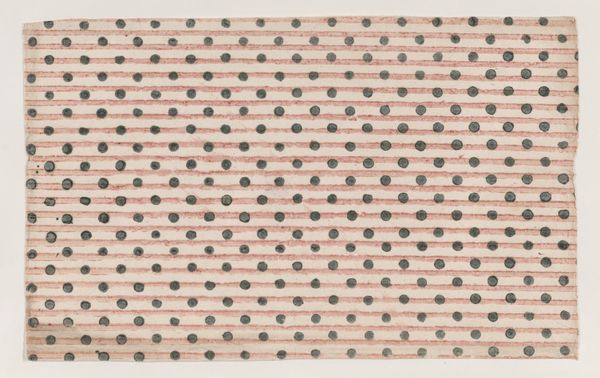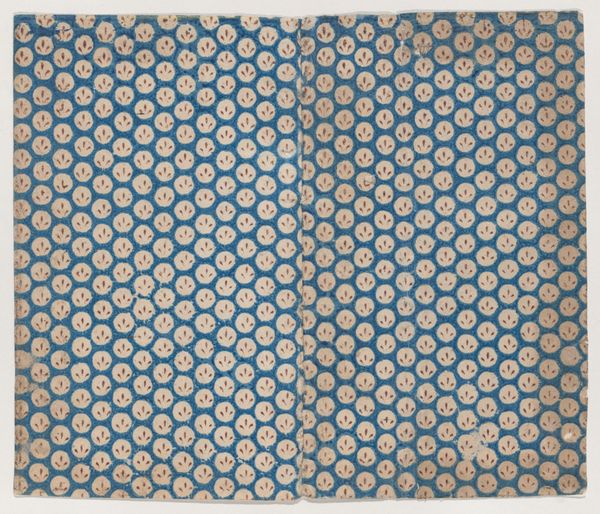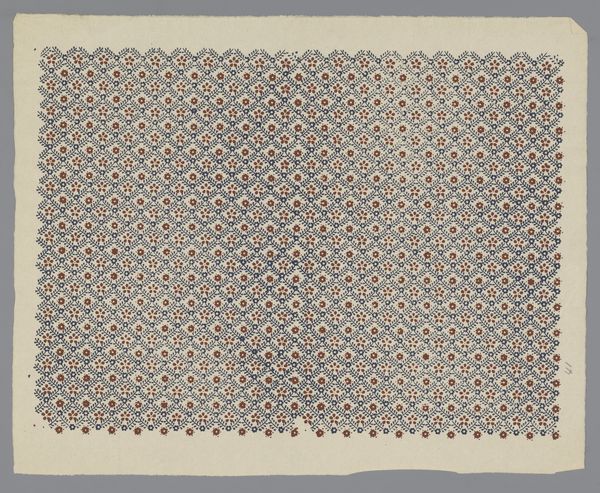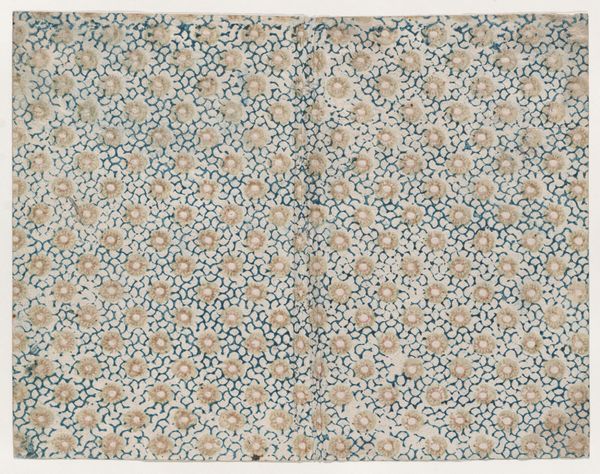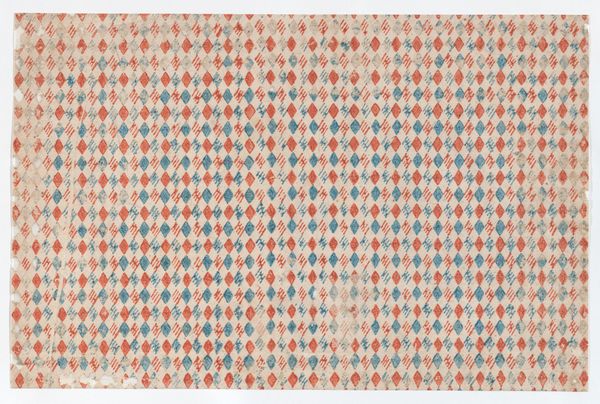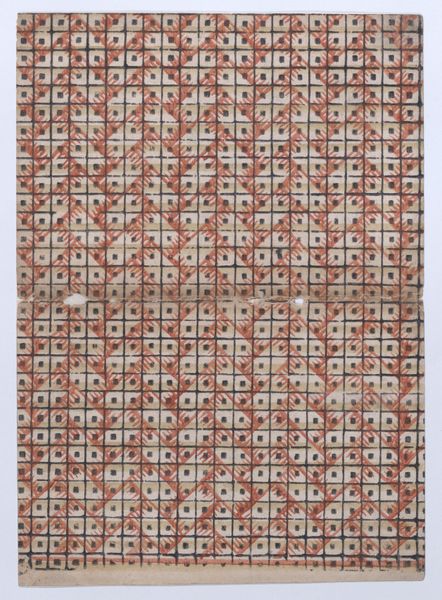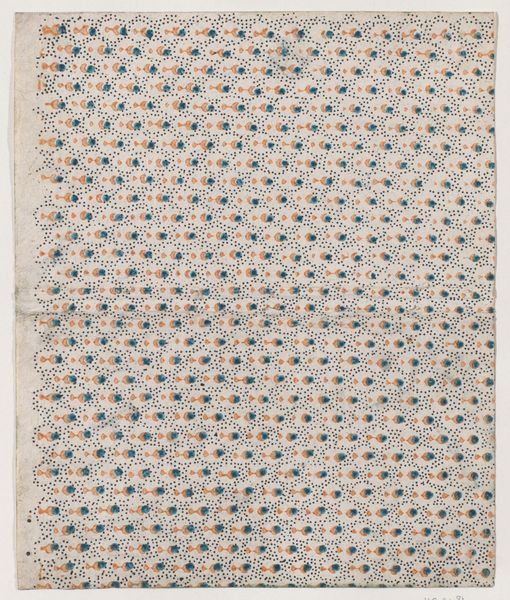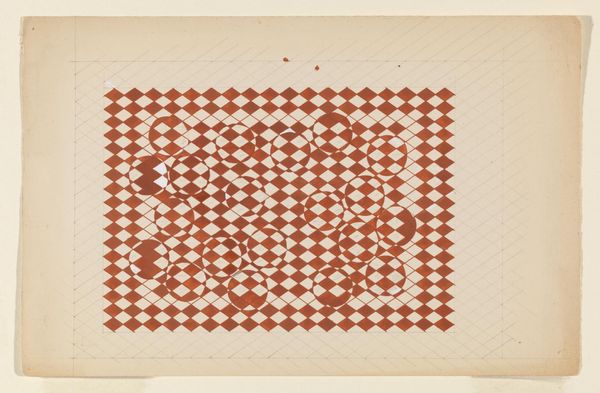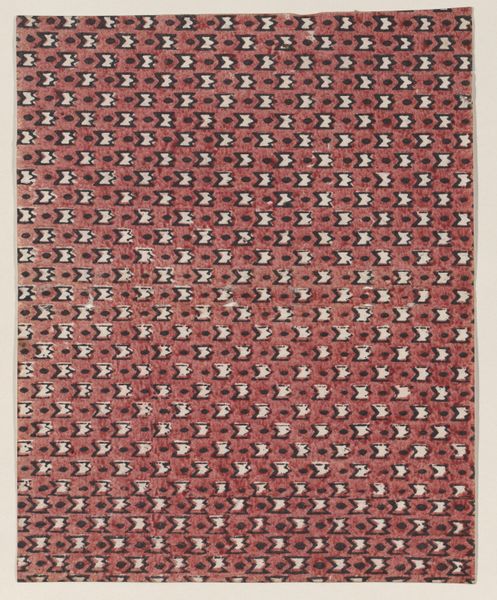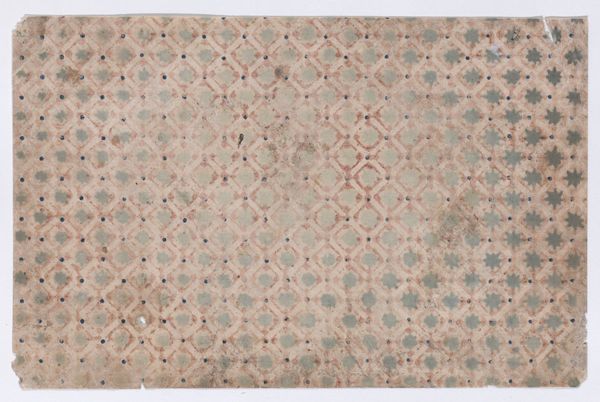
Udkast til tøndehvælv med ottekantede og kvadratiske kassetter i gråt og rødt 1743 - 1809
0:00
0:00
drawing, tempera
#
drawing
#
tempera
#
geometric pattern
#
geometric
#
geometric-abstraction
Dimensions: 277 mm (height) x 283 mm (width) (bladmaal)
Editor: Here we have Nicolai Abildgaard's "Udkast til tøndehvælv med ottekantede og kvadratiske kassetter i gråt og rødt," a tempera drawing created sometime between 1743 and 1809. It’s a very intricate pattern, quite visually arresting! I'm immediately curious about the repetition of shapes. How would you interpret this work? Curator: Well, consider that Abildgaard was working during a period of renewed interest in classical architecture. The geometric pattern speaks to that. But I am fascinated by how these basic geometric forms — the octagon and square — tap into deeper symbolic meaning. Editor: How so? What kind of meaning could they possibly have? Curator: Think about the octagon, for instance. Eight sides…it was often used as a transitional shape, representing rebirth and regeneration across different cultures. Editor: So the artist consciously placed them there? Curator: Perhaps. He definitely knew its prevalence in religious architecture of many types. Then observe how those shapes intersect and create further implied forms and divisions within the drawing. Look for subtle hierarchies, or perhaps disruptions. What do those colors mean to you, beyond just design? Editor: I see… Red definitely pops, maybe symbolising power, warmth, blood. Gray as mutedness. Curator: And consider how this piece, a design *for* architecture, speaks to a dialogue between interior and exterior, surface and structure. I am curious if the work would lose some or all of that significance, if removed from the artist’s context. Editor: That's really made me think about how seemingly simple geometric shapes can carry so much weight! It has become much richer for me. Curator: Exactly! And by recognizing and understanding such iconographic and contextual significance, the pattern moves beyond mere aesthetic arrangement. We can use such elements to access and build cultural memory.
Comments
No comments
Be the first to comment and join the conversation on the ultimate creative platform.
